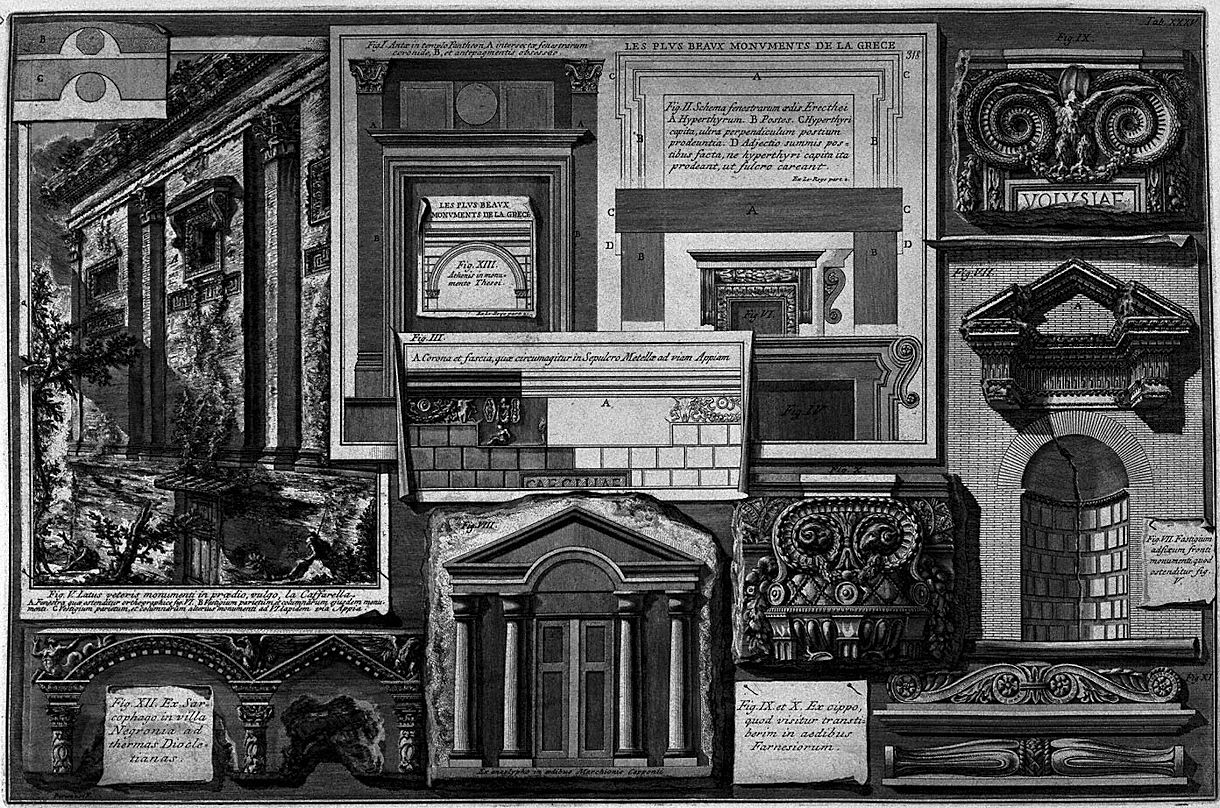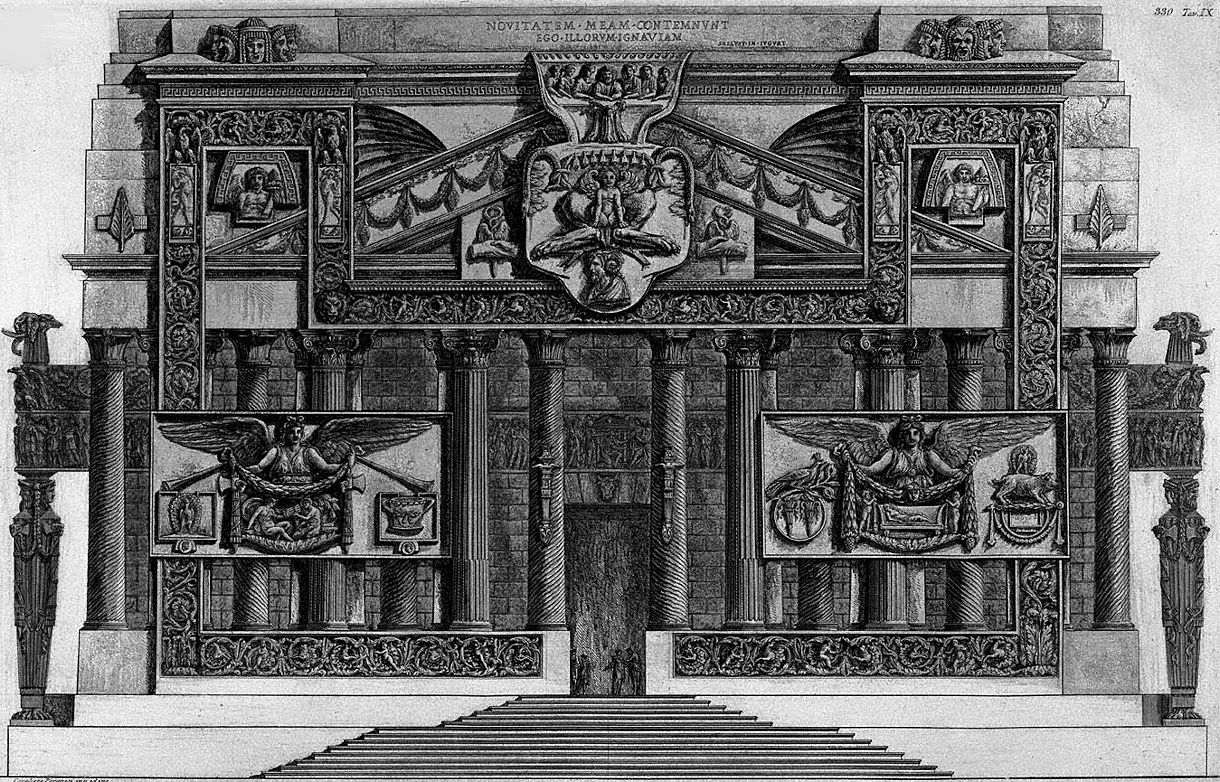piranesi |
1983 |
|
|
| By the time that the Campo Marzio appeared in 1762 Piranesi was already beginning to abandon a narrow defence of Rome supported by archaeological and literary evidence alone. His opening publication in the controversy, Della Magnificenza ed Architettura de' Romani of 1761, had defended Italic achievements on the grounds of austerity and functionalism revealed by Etruscan and Roman Republican architecture. This approach, unwisely adopted as a debating position against Le Roy, Laugier and the Philhellene rationalists, openly conflicted with Piranesi's personal preference for the richly elaborate character of Late Roman ornament, copiously illustrated in the same treatise. By the early 1760s, as indicated by the additional plates to the Opere Varie and the Carceri, Piranesi had begun to express his predilection for complexity by developing a novel system of architectural composition, based on an imaginative synthesis of disparate styles.18 This approach--neo-Mannerist in form if not in intention--was ultimately given a theoretical justification in the Parere su l'Architettura. The Campo Marzio, therefore, represents a critical phase in the emergence of Piranesi's theoretical and artistic beliefs towards the middle of the decade. |
|
|
|
| 18 For the significance of the four small architectural fantasies added to the Opere Varie (FociIlon 123, 126-128) and the two new plates of the reissued Carceri (Focillon 25 and 26), see J. Wilton-Ely, The Mind and Art of Piranesi cit., pp. 78, 89. |
|
|
|
|
|
Quondam © 2021.10.24 |

